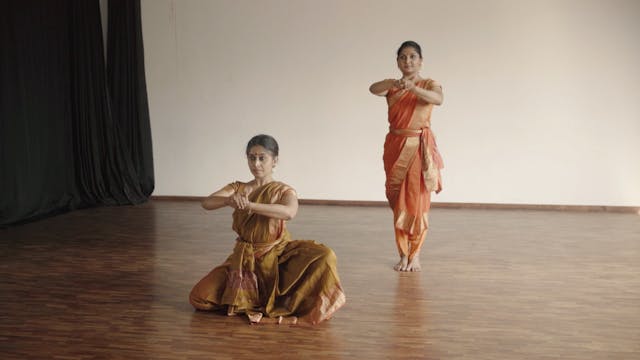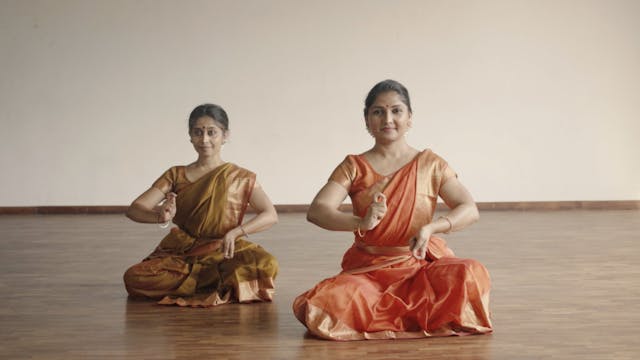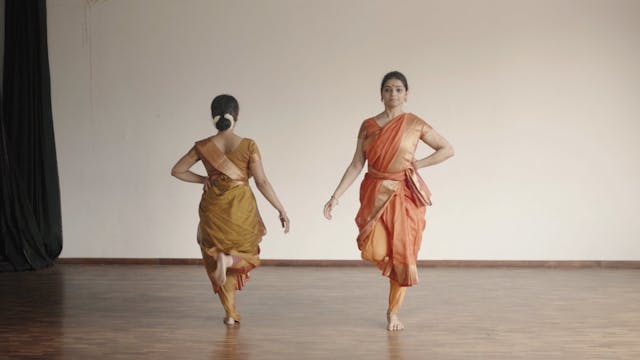The Drishtibhedas, as described in the Abhinaya Darpana are 8 in number.
These Drishtibhedas, or gestures of the eyes are used primarily communicate meaning gesturally, and also used for specificity in Nritta.
Please refer to the Shloka below for pronunciation. Please note that the separate movements of the head when put together in a Shloka form 'Sandhis', or compound words in the Sanskrit language. Words like 'ca', 'thatha', mean "and", "also". The separate words for each movement are also given below the shloka.
Samamālokitam Sāci Pralokitanimīlita
Ullokitaānuvrtte ća tatha ćaiva Avalokitam
Ityashtow drishtibedhaha Syuhu Kirtitaha Purvasuribhihi
Sama
Ālokita
Sāci
Pralokita
Nimīlita
Ullokita
Anuvrtta
Avalokita
Up Next in Abhinaya Darpana
-
Daśavatāra Hasta
Daśavatāra Hasta
The Abhinaya Darpana Hastas for the ten incarnations of VishnuAvatar: Right Hand / Left Hand
1. Matsya: Ardhaćandra (shoulder level) / Ardhaćandra (shoulder level)
2. Kūrma: Mrugasirśa (shoulder level) / Mrugasirśa (shoulder level)
3. Varaha: Mrugasirśa (waist level) / Mrugasi... -
Devata Hasta
Devata Hasta
The hand gestures that depict the various gods and goddesses according to the Abhinaya Darpana
अथात्र ब्रह्मरुद्रादिदेवताभिनयक्रमात्
मूर्तिभेदेन ये हस्तस्तेषां लक्षणमुच्यतेAthātra brahmarudradidevatabhinayakramāt
Mūrtibhedena yé hastasteśām lakśanmūćyatéDeity Right Hand Left H...
-
Ćaris (Abhinaya Darpana)
A Ćari is a type of gait or manner in which the body can move. Taken from the root word 'ćar' to move in sanskrit, it represents a movement through space. The ćaris of the Abhinaya Darpana are very different from the ćaris of the Nātyaśaśtra
These types of gaits are used primarily to communicate...


